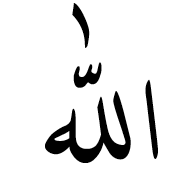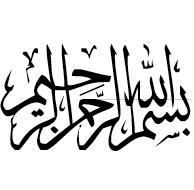 Shape The shape varies slightly from font to font, and is not always correct – for example, a number of fonts omit the initial alef. Here is the rendering of this code point in the Unicode charts.
Shape The shape varies slightly from font to font, and is not always correct – for example, a number of fonts omit the initial alef. Here is the rendering of this code point in the Unicode charts.ހ
h consonant.
ހަނދު
ފަހެއް
`, '\u{0781}': `
ށ
ʂ consonant.
އަށާރަ
ތަށި
With sukun
ʔ in final position in a word with ް [U+07B0 THAANA SUKUN], eg. ރަށް
ʂ when the word continues, eg. ރަށެއް ރަށަކީ
Gemination
With ް [U+07B0 THAANA SUKUN] before another consonant, leads to that consonant being doubledd, eg. އަށްޑިހަ
`, '\u{0782}': `ނ
n consonant.
ނޭފަތް
ނަން
Prenasalisation
When written with no diacritic, this indicates prenasalization of a following stop, eg. ކަނޑު
It is the only case where a letter can appear without a diacritic. In some cases, however, the prenasalisation is not indicated at all, although it is pronouncedwd, eg.
ކަޑު
Gemination
With ް [U+07B0 THAANA SUKUN] it indicates gemination of a following nasal, eg. އެންމެ
`, '\u{0783}': `ރ
r consonant.
ރަތް
އިރުގައި
ކްރޯރް
`, '\u{0784}': `ބ
b consonant.
ބައްޓެއް
ބިބީ
ފެބްރުއަރީ
`, '\u{0785}': `ޅ
ɭ consonant.
އަތޮޅު
ބަޅު
`, '\u{0786}': `ކ
k consonant.
ކަނޑު
މެކްސިކޯ
މިއުޒިކް
`, '\u{0787}': `އ
Used as a carrier for vowel diacritics where a vowel appears at the start of a word or is pronounced separately after another vowel.
އިރުގައި
ސައުވީސް
ʔ with sukun at the end of a word, eg. ފައް އެކެއް
Gemination
With ް [U+07B0 THAANA SUKUN] indicates gemination of a following consonant.
ބައްޓެއް
ސިއްކީމް
However geminated nasals are formed using ނ [U+0782 THAANA LETTER NOONU]
In normal speech, however, the glottal stop assimilates completely to the following consonant, except before vowels or ހ [U+0780 THAANA LETTER HAA], where it becomes a velar nasal ŋ
`, '\u{0788}': `ވ
ʋ consonant.
ވައި
ނަވާވީސް
`, '\u{0789}': `މ
m consonant.
މިއުޒިކް
ޑިސެމްބަރު
އިސްލާމް
`, '\u{078A}': `ފ
f consonant.
ފެން
ނޭފަތް
`, '\u{078B}': `ދ
d consonant.
ދިވެހިބަސް
މަދްޔަ ޕްރަދޭޝް
ބުދަ ދުވަސް
`, '\u{078C}': `t consonant.
ތިރީސް
ސަތޭކަ
ތ
jʔ in final position in a word with ް [U+07B0 THAANA SUKUN].
ރަތް
ފޮތް
Gemination
With ް [U+07B0 THAANA SUKUN] before another consonant, leads to that consonant being doubled, but also with the addition of j.
އަތްޕުޅު
`, '\u{078D}': `ލ
l consonant.
ލޯބި
އިސްލާމް
އެޕްރީލް
`, '\u{078E}': `ގ
ɡ consonant.
ގުރަހަ
އިރުގައި
ދިގު
`, '\u{078F}': `ޏ
ɲ consonant.
`, '\u{0790}': `ސ
s consonant.
ސައުވީސް
ފަންސަވީސް
ހާސް
`, '\u{0791}': `ޑ
ɖ consonant.
ޑިސެމްބަރު
އިންޑިއާ
ގޮނޑި
`, '\u{0792}': `ޒ
z consonant.
މިއުޒިކް
މޭޒު
`, '\u{0793}': `ޓ
ʈ consonant.
ޓެމިލް ނާޑޫ
މަރާޓީ
`, '\u{0794}': `ޔ
j consonant.
މިޔަރު
ރިޔާޟިއްޔާތު
`, '\u{0795}': `ޕ
p consonant.
ޕަންޖާބު
އެޕްރީލް
ސެޕްޓެމްބަރު
`, '\u{0796}': `ޖ
d͡ʒ consonant.
ޖާނަވާރު
ރާޖަސްތާން
ދިވެހިރާއްޖެ
`, '\u{0797}': `ޗ
t͡ʃ consonant.
ޗިލީ
މާރޗް
`, '\u{0798}': `ޘ
θ extended consonant, used to represent foreign sounds, esp. Arabic. The equivalent Arabic letter is ث.
`, '\u{0799}': `ޙ
ħ extended consonant, used to represent foreign sounds, esp. Arabic. The equivalent Arabic letter is ح.
ޙައްޖު
`, '\u{079A}': `ޚ
x extended consonant, used to represent foreign sounds, esp. Arabic. The equivalent Arabic letter is خ.
`, '\u{079B}': `ޛ
ð extended consonant, used to represent foreign sounds, esp. Arabic. The equivalent Arabic letter is ذ.
`, '\u{079C}': `ޜ
ʒ extended consonant, used to represent foreign sounds, esp. English.
`, '\u{079D}': `ޝ
ʃ extended consonant, used to represent foreign sounds, esp. Arabic, and Indian place names, but also other words. The equivalent Arabic letter is ش.
ޝަހަރު
ލަކްޝަދީބު
މަދްޔަ ޕްރަދޭޝް
`, '\u{079E}': `ޞ
s̴ extended consonant, used to represent foreign sounds, esp. Arabic. The equivalent Arabic letter is ص.
`, '\u{079F}': `ޟ
d̴ extended consonant, used to represent foreign sounds, esp. Arabic. The equivalent Arabic letter is ض.
ރިޔާޟިއްޔާތު
`, '\u{07A0}': `ޠ
t̴ extended consonant, used to represent foreign sounds, esp. Arabic. The equivalent Arabic letter is ط.
`, '\u{07A1}': `ޡ
z̴ extended consonant, used to represent foreign sounds, esp. Arabic. The equivalent Arabic letter is ظ.
`, '\u{07A2}': `ޢ
ʕ extended consonant, used to represent foreign sounds, esp. Arabic. May be omitted. The equivalent Arabic letter is ع.
ޝަރީޢަތް
`, '\u{07A3}': `ޣ
ɣ extended consonant, used to represent foreign sounds, esp. Arabic. The equivalent Arabic letter is غ.
`, '\u{07A4}': `ޤ
q extended consonant, used to represent foreign sounds, esp. Arabic. The equivalent Arabic letter is ق.
`, '\u{07A5}': `ޥ
w extended consonant, used to represent foreign sounds, esp. Arabic. The equivalent Arabic letter is و.
`, '\u{07A6}': `ަ
ə vowel.
ބަޅު
އަށާރަ
`, '\u{07A7}': `ާ
əː vowel.
ހާސް
ޖާނަވާރު
`, '\u{07A8}': `ި
i vowel.
އިރުގައި
ވައި
ދިގު
`, '\u{07A9}': `ީ
iː vowel.
ބިބީ
ހިންދޫދީން
`, '\u{07AA}': `ު
u vowel.
މިއުޒިކް
ހަނދު
`, '\u{07AB}': `ޫ
uː vowel.
މަނިޕޫރު
ދޫ
`, '\u{07AC}': `ެ
e vowel.
އެންމެ
ފެން
`, '\u{07AD}': `ޭ
eː vowel.
ނޭފަތް
ސަތޭކަ
`, '\u{07AE}': `ޮ
ɔ ~ o vowel.
އަތޮޅު
ދޮންކެޔޮ
`, '\u{07AF}': `ޯ
ɔː ~ oː vowel.
ކްރޯރް
މެކްސިކޯ
`, '\u{07B0}': `ް
Normally indicates that the consonant is not followed by a vowel.
Over އ [U+0787 THAANA LETTER ALIFU], or ނ [U+0782 THAANA LETTER NOONU] followed by a nasal, it indicates that a following consonant is geminated, eg. ބައްޓެއް އެންމެ
ʔ over އ [U+0787 THAANA LETTER ALIFU] at the end of a word, eg. ފައް
In normal speech, however, the glottal stop assimilates completely to the following consonant, except before vowels or ހ [U+0780 THAANA LETTER HAA], where it becomes a velar nasal ŋd.
`, '\u{07B1}': `ޱ
This letter was abolished from Maldivian official documents around 1953, but it is still seen in reprints of old books like the Bodu Tartheebu, and is used by the people of Addu Atoll and Fuvahmulah when writing songs or poetry in their dialects as the sound is still present in their spoken language.w
`, '\u{060C}': `،
Dhivehi uses the comma from the Arabic script block.
`, '\u{061B}': `؛
Dhivehi uses the semicolon from the Arabic script block.
`, '\u{061C}': `
In a RTL context, the bidi algorithm expects a sequence of numbers separated by hyphens (for example), to run left to right when preceded by Hebrew or N’Ko text, however it expects the sequence to run right to left when preceded by Arabic, Thaana, or Syriac characters.
ك 12-34-5678
އ 12-34-5678
ܐ 12-34-5678
ߕ 12-34-5678
א 12-34-5678
However, when a sequence like this appears alone on a line, it always runs left to right, because the bidi algorithm can't detect a previous Arabic, or other, character.
12-34-5678
This order is not appropriate for documents in Dhivehi.
The ALM is a way of producing the right sequencing by inserting what is effectively an invisible Arabic character before the number.
12-34-5678
RLM and RLI..PDI, etc, are unable to produce the RTL sequencing, because the difference lies in what script precedes the number.
Similar special ordering is applied to numbers in equations, such as 1 + 2 = 3 for Dhivehi language text.
`, '\u{061F}': `؟
Dhivehi uses the question mark from the Arabic script block.
`, '\u{0660}': `٠
Thaana orthographies commonly use ASCII digits, but may occasionally use digits from the Arabic script block.
`, '\u{0661}': `١
Thaana orthographies commonly use ASCII digits, but may occasionally use digits from the Arabic script block.
`, '\u{0662}': `٢
Thaana orthographies commonly use ASCII digits, but may occasionally use digits from the Arabic script block.
`, '\u{0663}': `٣
Thaana orthographies commonly use ASCII digits, but may occasionally use digits from the Arabic script block.
`, '\u{0664}': `٤
Thaana orthographies commonly use ASCII digits, but may occasionally use digits from the Arabic script block.
`, '\u{0665}': `٥
Thaana orthographies commonly use ASCII digits, but may occasionally use digits from the Arabic script block.
`, '\u{0666}': `٦
Thaana orthographies commonly use ASCII digits, but may occasionally use digits from the Arabic script block.
`, '\u{0667}': `٧
Thaana orthographies commonly use ASCII digits, but may occasionally use digits from the Arabic script block.
`, '\u{0668}': `٨
Thaana orthographies commonly use ASCII digits, but may occasionally use digits from the Arabic script block.
`, '\u{0669}': `٩
Thaana orthographies commonly use ASCII digits, but may occasionally use digits from the Arabic script block.
`, '\u{FDF2}': `ﷲ
According to the text of the Unicode Standard, you should normally create this word ligature with the following sequence of ordinary characters: اللّٰه (click on the red text to see the list).u,pp398-400 However, the compatibility decomposition for this character in the Unicode database does not contain the combining marks, although the font may automatically insert those, even though the text of the standard says that the ligature should not be formed by fonts when ـّ [U+0651 ARABIC SHADDA] and ـٰ [U+0670 ARABIC LETTER SUPERSCRIPT ALEF] are not present (because the four base characters exist in Persian and other languages in contexts where they have different meanings and pronunciations). Here is how it looks in your browser: الله
 Shape The shape varies slightly from font to font, and is not always correct – for example, a number of fonts omit the initial alef. Here is the rendering of this code point in the Unicode charts.
Shape The shape varies slightly from font to font, and is not always correct – for example, a number of fonts omit the initial alef. Here is the rendering of this code point in the Unicode charts.
﷽
A common opening phrase in Arabic, meaning "In the name of God, the Most Gracious, the Most Merciful" that generally appears above a text.
This is the phrase recited before each sura (chapter) of the Qur'an – except for the ninth. It is used by Muslims in various contexts (for instance, during daily prayer) and is used in over half of the constitutions of countries where Islam is the official religion or more than half of the population follows Islam, usually the first phrase in the preamble, including those of Afghanistan, Bahrain, Bangladesh, Brunei, Egypt, Iran, Iraq, Kuwait, Libya, Maldives, Pakistan, Tunisia, and the United Arab Emirates.
There is no decomposition for this character.
 Shape The shape varies significantly from font to font and usage to usage. Here is the rendering of this code point in the Unicode charts. See other renderings at Wikipedia.
Shape The shape varies significantly from font to font and usage to usage. Here is the rendering of this code point in the Unicode charts. See other renderings at Wikipedia.
!
Exclamation mark.
`, '\u{0028}': `(
Parenthesis.
`, '\u{0029}': `)
Parenthesis.
`, '\u{002E}': `.
`, '\u{003A}': `:
`, '\u{201C}': `“
Quotation mark.
`, '\u{201D}': `”
Quotation mark.
`, }